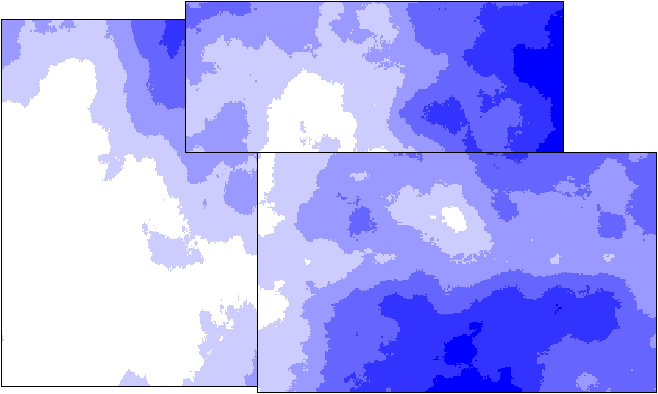|
|
|
|
Clouds, Smoke, and Vapor Trails |
Clouds, smoke, and vapor trails all can be created by an extension of the billboarding technique (see Billboarding). By rotating the billboard on two axes instead of one, an application can enable the user to view a billboard from any angle. Typically, an application rotates the billboard on the horizontal and vertical axes.
To make a simple cloud, an application can rotate a rectangular primitive on one or two axes so that the primitive faces the user. A cloud-like texture then can be applied to the primitive with transparency. The cloud can be animated by applying a series of textures over time.
An application can create more complex clouds by forming them from a group of primitives. Each part of the cloud is a rectangular primitive. The primitives can be moved independently over time to give the appearance of a dynamic mist. This concept is illustrated in the following figure.

The appearance of smoke is displayed in a manner similar to clouds. It typically requires multiple billboards, like complex clouds. Smoke usually billows and rises over time, so the billboards that make up the smoke plume need to move accordingly. More billboards might need to be added as the plume rises and disperses.
A vapor trail is a smoke plume that does not rise. However, like a smoke plume, it disperses over time. The following figure illustrates the technique of using billboards to simulate a vapor trail.

Send comments about this topic to Microsoft. © Microsoft Corporation. All rights reserved.
Feedback? Please provide us with your comments on this topic.
For more help, visit the DirectX Developer Center